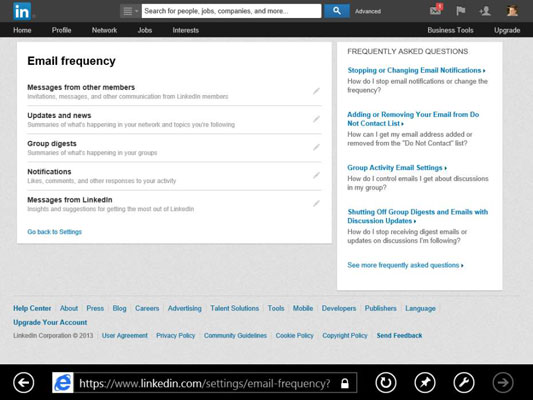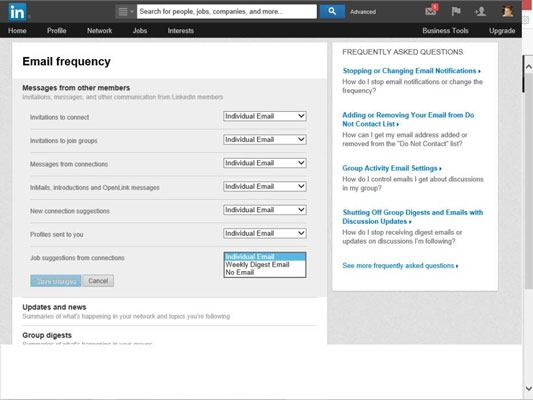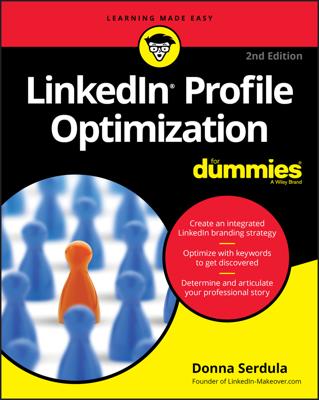Social networking is takes lots of work, time and effort. Here are ten essential do’s and don’ts to help you build LinkedIn relationships and get the most value out of your time.
Do keep your profile complete and current
Even though LinkedIn has many features, your profile is still one of the most compelling reasons to use the website. Here are a few of ways to keep your profile current:
List all your former employers and schools.
You don’t necessarily need to include details about positions early in your career — just the companies and titles will suffice. A good guideline is to include details on just the past 7–10 years.
Update your profile (and headline) any time you achieve a new position, complete a major side project, or receive a special award or recognition.
Don’t use canned invitations
Nothing says “You’re not really worth a few extra seconds of my time” quite like the all-too-familiar “I’d like to add you to my professional network” message.
Here are a few tips for keeping invitations efficient but personal:
Keep it short when you can.
Make sure you know whether the person is already a LinkedIn member.
If the contact isn’t already a member, offer to help with the registration process.
You can still personalize a batch of invitations.
Don’t expect everyone to network like you do
Setting rigid networking expectations can be a source of needless frustration and can actually prevent you from building relationships with some pretty great people. Here are some of the common issues that arise:
Different people have different standards for connecting. Don’t judge them — they’re doing what’s right for them.
*People might have perfectly good reasons not to allow other people to browse their LinkedIn connections list. People may have their own reasons for keeping things private.
Not everyone responds in a timely manner. It just means the people you’re trying to contact are busy.
Some people are bad with names. Unless you’re 100 percent certain that she will recognize your invitation, contact her via e-mail or phone or a LinkedIn introduction request before sending a connection request.
Relationships aren’t always reciprocal. Don’t expect every favor to be returned in kind.
Not everyone networks just to network. So don’t assume everyone should.
Do your homework
People provide you with all kinds of guidance, both direct and implicit, regarding what to contact them about and how. If you’re the one initiating the communication, it’s your responsibility to communicate on their terms. And showing that you took the time to do your homework about them demonstrates a certain level of commitment from the outset.
The most basic rule of good conversation is to listen. In the context of LinkedIn, that rule means simply this: Pay attention to what’s on a person’s profile. Also, review her contact settings. Respect what you see in her profile and contact settings.
Do give LinkedIn messages equal importance
Many people have a tendency to treat LinkedIn communications as less important or less time-sensitive than an official e-mail or phone call. Nothing could be further from the truth.
Here are some tips for managing your LinkedIn communications:
Don’t turn off e-mail notifications.
Log in to your LinkedIn account to make sure you have e-mail notifications set up correctly.
You see the Email Frequency screen.

By clicking each category, such as Messages from Other Members, you can set up what comes to you as an individual e-mail, a weekly digest e-mail, or no e-mail so you can decide what is most important.

Check your LinkedIn Inbox every day.
Do it, delegate it, defer it, or delete it.
Don’t spam
One person’s networking is another person’s spam. There are plenty of ways to use LinkedIn productively without getting a bad rep as a spammer. Here are some basic rules of etiquette:
Don’t post marketing messages or connection-seeking messages as Status Updates.
Don’t automatically subscribe your connections to your newsletter.
Don’t send connection requests to people you don’t know.
Do be proactive about making new connections
If you just set up a profile, connect with a few of your contacts, and then expect business to come your way, you’re setting yourself up for disappointment. Being a little bit proactive goes a long way:
Search for people who can help you with your goals.
Introduce people to each other.
Get involved with groups.
Do cross-promote
Your LinkedIn profile is just one web page of your total web presence. It should connect people to your other points of presence, and you probably want to direct people to your LinkedIn profile from other venues as well. Here are some good cross-promotion practices:
Customize your LinkedIn profile links.
Include a link to your LinkedIn profile in your signature.
Link to your LinkedIn profile in your blog's About page.
Install the LinkedIn app for your smartphone.
Put your LinkedIn URL on your business card.
Do add value to the process
LinkedIn is based on the idea that existing relationships add value to the process of people meeting each other. To add value, you have to give those introduction requests some thought. Is it an appropriate fit for the recipient? Is the timing good?
Add your comments to the introduction request. Do you know the sender? Say, “I worked with Michael Bellomo for several years as a co-author, and he was hard-working, trust-worthy, and ambitious.”
Don’t confuse quantity with quality
Just because you’re doing a lot of something doesn’t mean you’re doing something well. If you want to track your real progress using LinkedIn, use metrics that you know directly tie to business results, such as
Leads generated
Joint venture/strategic partner prospects generated
Qualified job candidates contacted
Potential employers successfully contacted
Interviews scheduled
Speaking opportunities garnered
Publicity opportunities created

